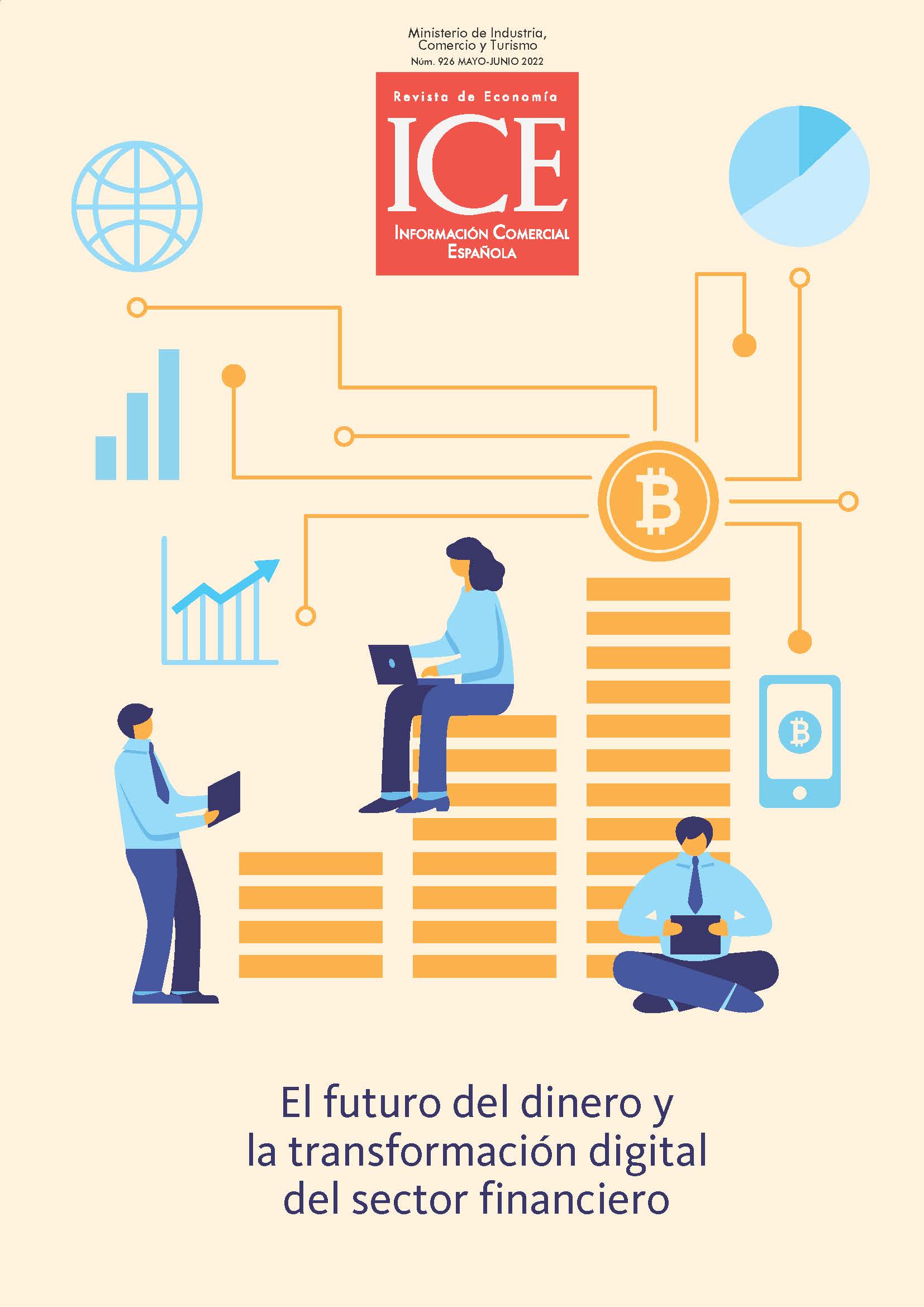Tradición e inteligencia artificial: oportunidades y retos del machine learning para los servicios financieros
##plugins.themes.bootstrap3.article.sidebar##
Descargas
##plugins.themes.bootstrap3.article.main##
Los métodos basados en la inteligencia artificial están transformando multitud de sectores al permitir automatizar tareas rutinarias e importantes mejoras en el análisis de la información. El sector financiero no es ajeno a esta tendencia y está tratando de aprovechar las oportunidades de estas técnicas al tiempo que debe ser consciente y actuar ante los riesgos y limitaciones que implican.
##plugins.themes.bootstrap3.article.details##
Agrawal, A., Gans, J., & GodlFarb, A. (2018). Prediction Machines: The Simple Economics of Artificial Intelligence. Harvard Business Review Press.
Alonso, A., & Carbó, J. M. (2020). Machine learning in credit risk: measuring the dilemma between prediction and supervisory cost (Documento de trabajo del Banco de España n.º 2032).
Alonso, A., & Carbó, J. M. (2022). Accuracy and stability of explanations of machine learning models for credit default prediction. Journal of Financial Innovation. Forthcoming.
Athey, S. (2018). The impact of machine learning on economics. The economics of artificial intelligence: An agenda, 507-547.
Athey, S., & Imbens, G. W. (2019). Machine learning methods that economists should know about. Annual Review of Economics, 11, 685-725.
BaFin, Bundesanstalt für Finanzdienstleistungsaufsicht. (2021). Big data and artificial intelligence: Principles for the use of algorithms in decision-making processes.
Bartlett, R., Morse, A., Stanton, R., & Wallace, N. (2022). Consumer-lending discrimination in the FinTech era. Journal of Financial Economics, 143(1), 30-56.
Blanchard, O. (2017). Do DSGE models have a future? In R. S. Gürkaynak, & C. Tille (Eds.), DSGE Models in the Conduct of Policy: Use as intended (pp. 93-100). CEPR Press.
BoE, Bank of England. (2019). Machine learning in UK financial services.
Bono, T., Croxson, K., & Giles, A. (2021). Algorithmic fairness in credit scoring. Oxford Review of Economic Policy, 37(3), 585-617.
Breiman, L. (2001). Statistical Modeling: The Two Cultures. Statistical Science, 16(3), 199-215.
DBE/BaFin, Deutsch BundesBank Eurosystem/Bundesanstalt für Finanzdienstleistungsaufsicht. (2021). Machine learning in risk models – Characteristics and supervisory priorities.
De Andrés, P., Gimeno, R., & Mateos de Cabo, R. (2021). The gender gap in bank credit access. Journal of Corporate Finance, 71, 101782.
Dobbie, W., Liberman, A., Paravisini, D., & Pathania, V. (2021). Measuring bias in consumer lending. The Review of Economic Studies, 88(6), 2799-2832.
Dupont, L., Fliche, O., & Yang, S. (2020). Governance of Artificial Intelligence in Finance. Banque De France.
EBA, European Banking Authority. (2020). Report on Big Data and Advanced Analytics.
EBA, European Banking Authority. (2021). Discussion Paper on Machine Learning for IRB Models.
EC, European Commission. (2021). Fostering a European approach to Artificial Intelligence. COM(2021) 205 final
Fernández Bedoya, A. (2019). Inteligencia Artificial en los servicios financieros. Boletín Económico del Banco de España n.º 2/2019. Artículos analíticos.
FSB, Financial Stability Board. (2017). Artificial intelligence and machine learning in financial services. Market developments and financial stability implications.
Fuster, A., Goldsmith?Pinkham, P., Ramadorai, T., & Walther, A. (2022). Predictably unequal? The effects of machine learning on credit markets. The Journal of Finance, 77(1), 5-47.
Goldwasser, S., Kim, M. P., Vaikuntanathan, V., & Zamir, O. (2022). Planting Undetectable Backdoors in Machine Learning Models. arXiv preprint arXiv:2204.06974.
Goodell, J. W., Kumar, S., Lim, W. M., & Pattnaik, D. (2021). Artificial intelligence and machine learning in finance: Identifying foundations, themes, and research clusters from bibliometric analysis. Journal of Behavioral and Experimental Finance, 32, 100577.
Hoepner, A. G. F., McMillan, D., Vivian, A., & Simen, C. W. (2021). Significance, relevance and explainability in the machine learning age: an econometrics and financial data science perspective. The European Journal of Finance, 27(1-2), 1-7.
IIF, Institute of International Finance. (2019). Machine Learning in Credit Risk (2nd edition).
IIF, Institute of International Finance. (2020). Machine Learning governance.
Königstorfer, F., & Thalmann, S. (2020). Applications of Artificial Intelligence in commercial banks – A research agenda for behavioral finance. Journal of Behavioral and Experimental Finance, 27, 100352.
Lundberg, S. M., & Lee, S. I. (2017). A unified approach to interpreting model predictions. In S. Thrun, L. K. Saul, & B. Schölkopf (Eds.), Advances in neural information processing systems (pp. 4765-4774).
Maurya, N., Kumar, N., & Maurya, V. K. (2020). A Review on Machine Learning (Feature Selection, Classification and Clustering) Approaches of Big Data Mining in Different Area of Research. Journal of Critical Reviews, 7(19), 2610-2626.
Molnar, C. (2020). Interpretable machine learning. A guide for making black box models interpretable. Lulu.com.
Mullainathan, S., & Spiess, J. (2017). Machine learning: an applied econometric approach. Journal of Economic Perspectives, 31(2), 87-106.
OECD, Organisation for Economic Co-operation and Development. (2021). Artificial Intelligence, Machine Learning and Big Data in Finance Opportunities, Challenges and Implications for Policy Makers.
Phelps, E. S. (1972). The Statistical Theory of Racism and Sexism. American Economic Review, 62(4), 659-661.
Ribeiro, M. T., Singh, S., & Guestrin, C. (2016, August). “Why should I trust you?" Explaining the predictions of any classifier. In Proceedings of the 22nd ACM SIGKDD international conference on knowledge discovery and data mining (pp. 1135-1144).
Romer, P. (2016). The Trouble with Macroeconomics. Commons Memorial Lecture of the Omicron Delta Epsilon Society.


